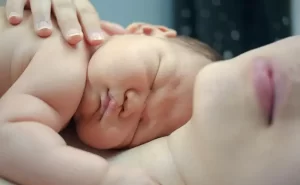Is It Possible to Claim Childcare Expenses as Tax Deductions?
Child care expenses in the United States are eligible for tax deductions under the Child and Dependent Care Credit. This tax credit enables you to reduce a specific proportion of your childcare costs from your taxable earnings.
Child and Dependent Care Credit
To qualify for the Child and Dependent Care Credit, you must satisfy the following criteria:
To engage in employment or job-seeking activities, you must have incurred expenditures related to the care of your children.
The child care expenditures must have been incurred to provide care for a kid who meets the criteria of being under 13 or for a disabled dependent regardless of age.
You are required to have generated income throughout the year.
Eligibility
Your income level and the number of qualified children or dependents in your care determine the eligibility for the Child and Dependent Care Credit. In 2023, the maximum allowable credit is $3,000 for a single kid or dependant and $6,000 for two or more children or dependents. The deductible portion of your childcare expenditures varies between 20% and 35%, depending on your income.
To be eligible for the Child and Dependent Care Credit, it is necessary to submit Form 2441 together with your tax return. To complete the process, please include details on your child care expenditures, including the care provider’s name and address, the precise amount of charges incurred, and the specific days on which the expenses were paid.
Supplementary Considerations
Below are some supplementary considerations about the Child and Dependent Care Credit:
You can receive credit solely for the childcare expenditures you have personally paid. You are ineligible to receive credit for costs already refunded to you.
Only child care expenditures above the dependent care benefit your employer provides are eligible for the credit.
Getting the Child and Dependent Care Credit is possible even if you have no tax liability.
The taxability of childcare assistance is contingent upon its origin.
Employer-provided childcare subsidies are often exempt from taxation for the employee. Consequently, the employee is exempt from paying taxes on the assistance amount.
Government-provided child care subsidies: The taxability of government-provided child care subsidies varies depending on the beneficiary. The taxability of government-provided childcare subsidies is contingent upon the particular program and the beneficiary’s income.
As an illustration:
The Child Care and Development Fund (CCDF) program in the United States offers childcare subsidies to low-income families. The beneficiary of CCDF subsidies is not required to pay taxes on them.
In the United States, companies can offer tax-free childcare help to their employees through the Dependent Care Help Program (DCAP). The DCAP subsidies are exempt from taxation for the employee.
The Dependent Care benefit is a tax benefit that may be claimed by taxpayers who incur childcare expenditures. The Dependent Care Credit is subject to taxation for the beneficiary.
If you need more certainty regarding the taxability of your childcare subsidy, it is advisable to get guidance from a tax expert.
Supplementary Guidelines
Below are supplementary guidelines for reporting childcare subsidies on your tax returns:
Employers will disclose the amount of an employer-provided childcare subsidy to the IRS by including it on your W-2 form.
If you have received a childcare subsidy from the government, you must disclose the exact amount of the subsidy when filing your tax return. It is crucial to seek guidance from a tax expert as the guidelines for reporting government-provided childcare subsidies might differ.
To qualify for the Dependent Care Credit, you must provide the precise sum of your childcare expenditures on your tax return. Even if you have received a childcare subsidy from the government, you can still claim the Dependent Care Credit.
Adhering to these guidelines guarantees that you accurately document your childcare subsidies on your tax returns.













